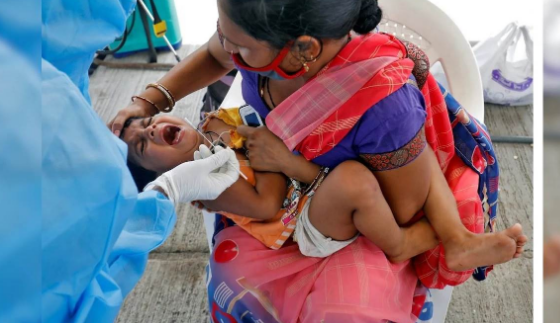During the survey, participants were asked about 23 common symptoms based on the definition of Long Kovid according to the World Health Organization. These symptoms persisted for more than two months.
London, Pretr. Serious infections of corona virus infection in children are rare, but a new study has revealed that they too can suffer from long covid. Symptoms of Kovid-19 can be seen in them for up to two months. The study is published in The Lancet Child and Adolescent Health journal. This study done on the effect of Long Kovid on 0-14 year olds in Denmark is of the largest sample size ever in this case. The Kovid-19 positive cases were compared with the control group, which did not have the disease.
Professor Selina Kikkenborg Berg from Copenhagen University Hospital, Denmark said that the purpose of our study was to find out how long-term Kovid symptoms affect children and infants. He said that our study showed that the symptoms of the disease in Kovid-19 positive children are longer and they have more side effects on every aspect of their quality of life than the children in the control group.
He said that most of the earlier studies regarding Long Kovid have been focused on adolescents and the representation of newborns and young children has been low, but the survey conducted under this study between January, 2020 to July, 2021, Kovid- The survey was conducted on children of 0-14 years who were infected with 19. Under this, data of about 11 thousand children who were Kovid-19 positive were collected and compared with more than 33 thousand children of the control group, who were never corona infected.
During the survey, participants were asked about 23 common symptoms based on the definition of Long Kovid, according to the World Health Organisation. These symptoms persisted for more than two months. In this, the symptoms of mood swings, rashes and abdominal pain were found to be the most in children 0-3 years old, while in children 4-11 years old, other than changes in mood, trouble remembering or concentrating. And there was also complaint of rashes.
At the same time, symptoms such as tiredness, mood swings and trouble remembering or concentrating were common in 12-14 year olds. It was also found that 40 percent (1,194 out of 478) children in the 0-3 year age group had symptoms of infection for two months or more. At the same time, in the age group of 4-11 years, this problem persisted in 38 percent (1,912 out of 5,023) children and 46 percent (2,857 out of 1,313) in the age group of 12-14 years.

